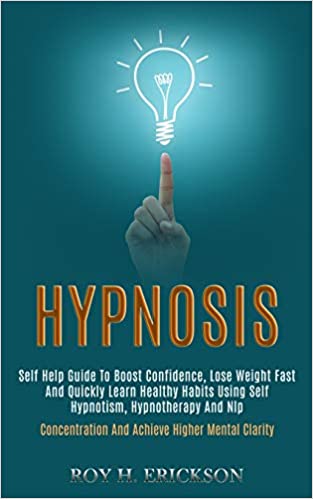
A proven method for helping people with psychological issues is Hypnotherapy. Although it is still relatively new, it can be used to help people overcome past traumas and break bad habits. It can also be helpful in managing stress and chronic pain. The best hypnotherapy methods are designed to provide lasting results and help people improve their lives. Listed below are some of the most common uses for hypnotherapy.
If used correctly, hypnosis is able to reduce pain and accelerate recovery from surgery. Hypnosis can be combined with sedation to speed up a patient's recovery. Also, it can help to reduce anxiety, nausea or distress after a procedure. Therefore, hypnosis is an excellent tool for treating mental health issues. A hypnotherapist may also be able to help someone quit smoking, lose weight, or have better sleep.

It is important to assess your needs and what motivates you to make positive changes. Your therapist should be able to trust you and help you understand your issues. This is the key to successful hypnotherapy sessions. The power of the human mind is incredible and everyone is susceptible to suggestion. It is essential to find out if you can be suggested by hypnotherapy. Once you have a good idea about your suggestibility, you can choose the best pedagogy.
These are the most popular types of hypnotherapy and can be used to address a variety of issues. Each hypnotherapist uses different techniques to achieve their goals. After listening to your concerns, the hypnotherapist can create a plan that will help you manage your anxiety. The psychiatric counselor can help clients reduce anxiety by using imagination, exploration, suggestion, and other methods.
There are several ways to learn how to become a Hypnotherapist. The RTT(r), is a hands-on training program that covers a range techniques for various conditions. Training programs for hypnotherapists must include a hands-on approach. The hypnotherapist should have the ability to give patient as much attention and care as possible. After all, a hypnotherapist will help the client experience a positive and productive process.

A hypnotherapist should be able to guide a client through a process of deep relaxation. The hypnotherapist may use mental images and suggestions to help clients change their behaviours. They will teach the patient how self-hypnotize as well as provide audiotapes which reinforce the lessons. The therapist will be able guide clients through the whole process of changing their behavior after they have finished working with them.
American Society of Clinical Hypnosis (ASCH), an organization of hypnotherapists, is specialized in a range of fields. ASCH members can be found in most states. ASCH membership is limited to a small number of members in each state. If you don't have the time to search, you can ask your friends and colleagues for recommendations. In addition to finding a hypnotherapist who fits your needs, it is also a good idea to consider referrals from other hypnotherapy professionals.
FAQ
What are 10 healthy habits?
-
Eat breakfast every day.
-
Don't skip meals.
-
Maintain a balanced diet.
-
Drink lots of water.
-
Take care to your body.
-
Get enough sleep.
-
Stay away from junk foods.
-
Daily exercise
-
Have fun!
-
Make new friends
Here are five ways to lead a healthy lifestyle.
Living a healthy lifestyle includes eating right, exercising regularly, getting enough sleep, managing stress, and having fun! Healthy eating means avoiding sugary and processed foods. Exercise is good for your body and muscles. Getting enough sleep improves memory and concentration. Managing stress reduces anxiety and depression. Fun keeps us happy and healthy.
How does an antibiotic work?
Antibiotics can be used to kill bacteria. To treat bacterial infections, antibiotics are used. There are many kinds of antibiotics. Some are given orally, while some are injected. Other antibiotics are applied topically.
Antibiotics are often prescribed to people who have been exposed to certain germs. One example is if someone has had chickenpox and wants to prevent shingles. A penicillin injection might be given to prevent pneumonia in someone who has had strep.
If antibiotics are to be administered to children, they must be prescribed by a doctor. Children are at greater risk than adults for developing serious side effects from taking antibiotics.
The most common side effect of antibiotics is diarrhea. Other possible side effects include diarrhea, nausea and vomiting, allergy reactions, dizziness, dizziness, stomach cramps, nausea, vomiting or allergic reactions. These side effects are usually gone once the treatment is complete.
How do I find out what's best for me?
You have to listen to what your body says. Your body knows best when it comes to how much exercise, food, and rest you need. You need to be aware of your body and not overdo it. Take care of your body and make sure that you're staying healthy.
What's the problem in BMI?
BMI stands to Body Mass Index. It is a measurement of body weight based on height. The following formula can be used to calculate BMI.
The weight of a kilogram divided by its squared height in meters.
The result is expressed using a number from 0 through 25. A score of 18.5+ indicates that you are overweight. A score higher than 23 indicates that you are obese.
A person of 100 kg with a height of 1.75m will have 22 BMI.
Is being cold good for your immune system.
Cold makes you weaker because you have less white blood cells to fight infection. Being cold can make you feel more comfortable because your brain releases endorphins which help reduce pain.
Statistics
- In both adults and children, the intake of free sugars should be reduced to less than 10% of total energy intake. (who.int)
- WHO recommends consuming less than 5% of total energy intake for additional health benefits. (who.int)
- nutrients.[17]X Research sourceWhole grains to try include: 100% whole wheat pasta and bread, brown rice, whole grain oats, farro, millet, quinoa, and barley. (wikihow.com)
- Extra virgin olive oil may benefit heart health, as people who consume it have a lower risk for dying from heart attacks and strokes according to some evidence (57Trusted Source (healthline.com)
External Links
How To
What does the meaning of "vitamin?"
Vitamins are organic compounds naturally found in food. Vitamins are necessary for us to absorb nutrients in the foods we consume. Vitamins cannot come from the body so food must provide them.
There are two types of vitamins: water soluble and fat soluble. Water soluble vitamins dissolve easily in water. Vitamin C,B1(thiamine), B2 (2riboflavin), and B3 (3niacin), as well as vitamin C,B1, B2 (riboflavin), and B3 (niacin), vitamin B6 (pyridoxine), vitamin folic acid (biotin), pantothenic, and choline are examples. The liver and fat soluble vitamins are stored within the liver and in fatty tissue. Examples include vitamin D, E, K, A, and beta carotene.
Vitamins can be classified by their biological activity. There are eight major groups of vitamins:
-
A - vital for healthy growth.
-
C is important for nerve function and energy production.
-
D - Essential for healthy teeth and bones.
-
E is needed for good reproduction and vision.
-
K – Required for healthy nerves & muscles.
-
P - vital for building strong bones andteeth.
-
Q – aids digestion of iron and iron absorption
-
R - Required for red blood cell production
The recommended daily allowance of vitamins (RDA), varies according to age, gender, physical condition, and other factors. The U.S. Food and Drug Administration sets RDA values.
For adults aged 19 and older, the RDA for vitamin B is 400 micrograms daily. Pregnant mothers need 600 micrograms per days because it is vital for the development and growth of their baby. Children ages 1-8 require 900 micrograms per day. For infants younger than one year, 700 micrograms are required daily. However, this number drops to 500 micrograms each day for children aged 9-12 months.
Children between the ages of 1-18 need 800 micrograms per daily for obesity, while children overweight require 1000 micrograms. Children underweight or obese will need 1200 mg per day.
Children ages 4-8 years who have been diagnosed with anemia need 2200 micrograms per day of vitamin C.
2000 micrograms are required daily for good health in adults over 50. Because of their higher nutrient needs, women who are pregnant or nursing need 3000 mg per day.
1500 micrograms is the recommended daily intake for adults aged 70+, who lose approximately 10% of muscle each year.
Women who are pregnant, nursing or breastfeeding need more than the RDA. Pregnant women require 4000 micrograms daily during pregnancy, and 2500 micrograms every day after birth. Breastfeeding moms need 5000 micrograms each day when breastmilk production occurs.